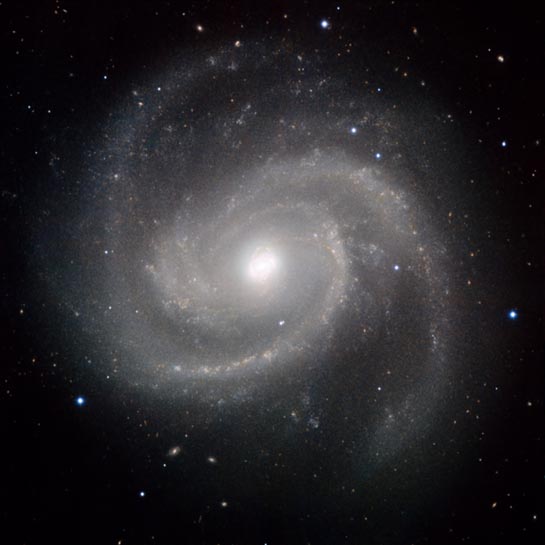
Spiral Galaxy
RA 12h 22m 55.38s Dec 15° 49' 40.95"
Coma Berenices
55 million light years
9.4
7.5 by 6.1 arcmin
6.48 x 6.46 arcminutes
North is 1.6° right of vertical
ESO/P. Grosbøl
October 27, 2010
Full View:G0913 Closeup:G1330 Galactic Core:G1203 Infrared: G1042
ABOUT THIS IMAGE:
The galaxy in this image is Messier 100, also known as NGC 4321, which was discovered in the 18th century by Pierre Méchain on March 15, 1781. It is a fine example of a "grand design" spiral galaxy - a class of galaxies with very prominent and well-defined spiral arms. About 55 million light-years from Earth, Messier 100 is part of the Virgo Cluster of galaxies and lies in the constellation of Coma Berenices (Berenice's Hair, named after the ancient Egyptian queen Berenice II).
The
image was made in infrared light with the HAWK-I camera on ESO's Very
Large Telescope at Paranal Observatory in Chile. HAWK-I is one of the
most powerful infrared imagers in the world, and this is one of the sharpest
and most detailed pictures of this galaxy ever taken from Earth. The filters
used were Y (shown here in blue), J (in cyan), H (in orange), and K (in
red). The field of view of the image is about 6.4 arcminutes.